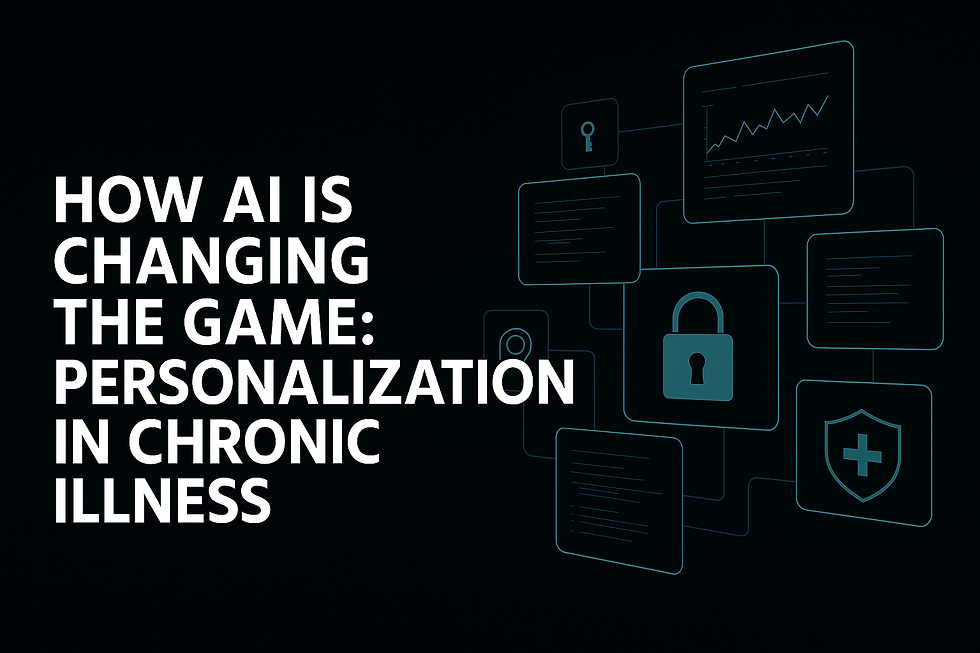Modularity Is the New Intelligence: Why Smart Systems Now Mean Stackable Ones
- Apr 8
- 3 min read
Updated: Apr 11
Modular intelligence isn’t a trend, it’s what survives collapse.
Across infrastructure, health, climate, and governance, the systems that are still standing aren’t the most “powerful.” They’re the ones that can evolve. This is a breakdown of how modular architecture quietly replaced scale as the new gold standard for smart systems and why CYNAERA bet on it early.
The Tension No One Talks About: Scale vs. Survivability
Most institutional systems were built for control, not adaptation.
Legacy logic assumes stability. That next month will look like last month. That the rules won’t change mid-game. And that if they do, someone will still be around to fix the code. That’s no longer reality.
We’re living in stacked crises; where climate, healthcare, policy, and labor systems now intersect daily. Institutions are finding out the hard way that massive systems without modularity can't be retooled fast enough to keep up. They're watching millions in infrastructure age out before it's fully deployed.
Modularity is the countermove. Not a patch. Not a plug-in. A structural shift.
What Modularity Actually Means in Practice
Too many orgs think “modular” means “you can add another dashboard.” That’s UI , not architecture.
Modular systems mean:
You can isolate and replace one logic stream without breaking the others
Each layer is self-aware, with boundaries, versioning, and validation
You can tune a system for local nuance, instead of generalizing for global use
You can detach from default logic, whether it's structurally or just historically wrong
This is intelligence as infrastructure. Not just software.
Real-World Glow-Ups (Hypothetical Use Cases)
🔥 A heatwave protocol that missed half the at-risk population? We could have plugged in VitalGuard™ to layer in chronic illness risk, disability density, and housing vulnerability by zip code. Entire regions reclassified. Resources reallocated.
📍 A national foundation that kept funding the same 10 counties? Their algorithm over-weighted historic activity. PULSE™ would have surfaced urgency signals in underfunded, high-impact zones , places their default logic never flagged.
🧬 A study with 40% dropout by Month 3? They blamed compliance. We could have ran SymCas™, which identifies which symptom clusters were likely to spike, when, and for whom. Protocols could have been adjusted. Dropout could be cut in half.
Why “One Platform” Thinking Is a Trap
Monolithic systems feel efficient, until you need to retool them. Let’s be clear: the future of data use is not a single elegant platform. It’s decentralized intelligence that can talk to each other.
Even the most advanced AI can't fix a system that was designed to ignore edge cases. Which is why CYNAERA’s logic stack doesn’t care what software you’re using. You can license our modules (like US-CCUC™ or RePath™) and run them in parallel. Or fork them entirely. We care that you use intelligence well. Not that you use ours forever.
Sector-by-Sector: What Modularity Looks Like
Climate + Infrastructure: Add localized risk overlays for disability or mold vulnerability to your existing adaptation dashboards. (VitalGuard™)
Research + Trials: Diagnose symptom dropout patterns before they break your study. Adapt inclusion logic without starting over. (SymCas™, ICDx™)
Funders + Public Policy Labs: Monitor urgency, not just volume. Surface underfunded, high-risk regions that standard metrics miss. (PULSE™)
Public Health Systems:Track regional prevalence and underdiagnosis in near real-time using modular models that adapt to your local context. (US-CCUC™)
Retail + Public Engagement: Forecast behavior shifts using signal-layered insights, not just historical trendlines. (NeuroVerse™)
Why Modularity Is Intelligence Now
Modular systems aren’t "tech innovation." They’re how you survive fractured data, incomplete pipelines, sudden shocks, and decision fatigue. We don’t need smarter systems. We need systems that still work when the smart person leaves the room. Modular intelligence, the kind that can plug in, update, evolve, and exit without killing the whole system , is that.
Want to See What Plug-and-Play Really Looks Like?
Browse Cynaera Market
Request a demo using your own constraints
Ask us what your current platform is missing , we’ll build the bridge
Start Seeing What Others Overlook
Most systems only track what’s easy to measure. But in every sector, from health and housing to education, infrastructure, or finance outcomes are shaped by what isn’t captured in the data.
CYNAERA’s free modules are designed to surface blind spots, connect overlooked signals, and give you tools that think ahead.
Whether you're managing people, programs, or platforms, our tools are built to help you:
Detect risk early, reducing costly downstream failures
Anticipate trends using real-world data patterns
Optimize performance by identifying hidden friction points
Make faster, higher-confidence decisions using predictive signals
These tools aren't just informative , they’re built to save time, reduce waste, and improve outcomes across sectors. Every insight we surface is designed to help you move earlier, spend smarter, and build systems that last.





Comments